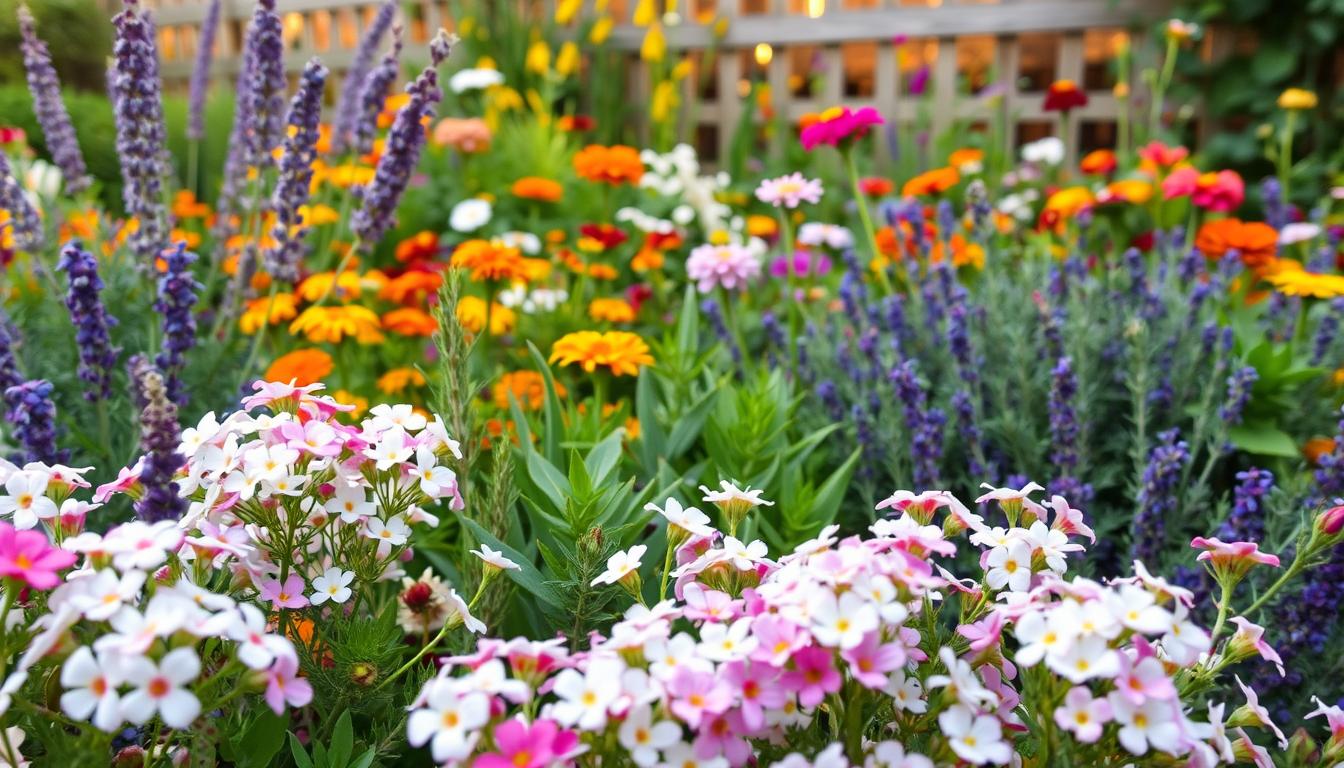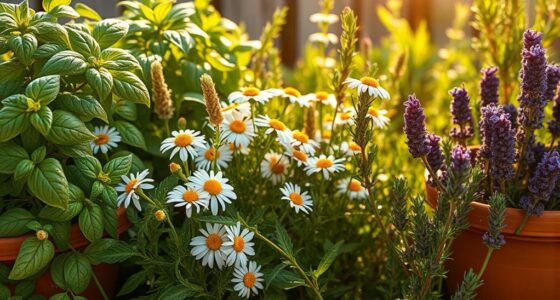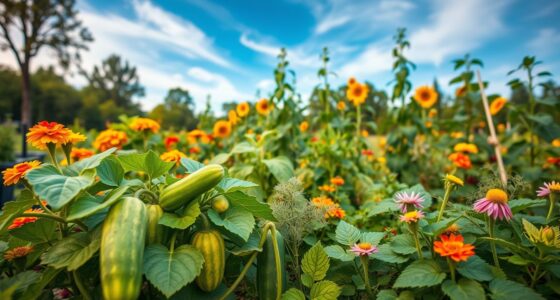Imagine stepping into your garden and being greeted by a symphony of colors, scents, and the gentle hum of busy pollinators. Alyssum, with its delicate clusters of flowers, not only brings beauty but also enhances the very fabric of your garden. If you’re looking to create a vibrant ecosystem that thrives in harmony, exploring alyssum companion plants is an essential step. As you delve into companion planting with alyssum, you will discover which are the best plants to grow with alyssum, ensuring your garden becomes a sanctuary for wildlife and a delight for the senses.
Key Takeaways
- Alyssum is an excellent companion plant that enhances garden biodiversity.
- Choosing the right companion plants can lead to healthier growth and larger yields.
- Alyssum attracts beneficial pollinators, helping to increase the productivity of your garden.
- Companion planting with alyssum can deter pests and improve soil health.
- Seasonal considerations will help ensure that your alyssum and its companions flourish together.
Understanding Alyssum and Its Benefits
Alyssum, particularly known by the alyssum plant definitions, refers to various species within the Lobularia genus. This charming, hardy annual is celebrated for its delicate, sweet-scented flowers. It flourishes in cooler temperatures, making it an ideal choice for those looking to maintain color throughout the growing season.
What Is Alyssum?
Alyssum is often appreciated for its low-growing habit and ability to form an attractive ground cover. With a range of colors from white to purple, these plants add aesthetic value to any garden. Its versatility means it can be used in borders, rock gardens, or as part of a mixed planting scheme. Alyssum thrives in well-drained soil and enjoys full sun to partial shade, making it an easy addition to your garden.
Key Benefits of Growing Alyssum
The benefits of alyssum extend far beyond its beauty. Here are some compelling reasons to incorporate this plant into your garden:
- Pollinator Attraction: Alyssum’s fragrance and nectar attract bees and butterflies, vital for pollination.
- Soil Enhancement: With its deep roots, alyssum contributes to soil structure and health, promoting overall garden vitality.
- Weed Suppression: As a ground cover, it helps to keep weeds at bay, reducing maintenance while providing visual appeal.
- Beneficial Insects: Alyssum blooms lure beneficial insects that assist in controlling pest populations, improving your garden’s biodiversity.
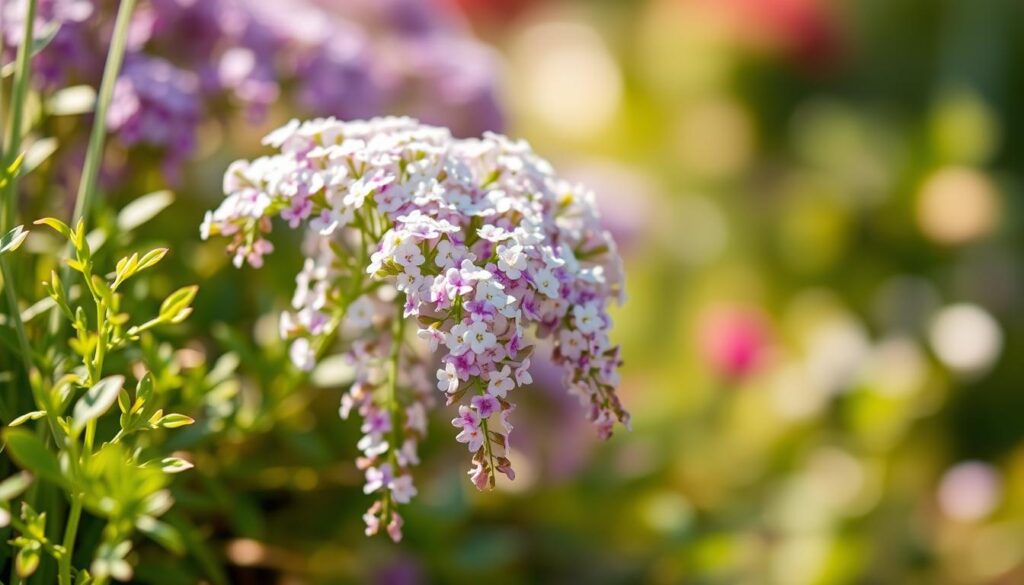
Best Companion Plants for Alyssum
Creating alyssum plant combinations with the right companions enhances your garden’s beauty and productivity. Selecting the best companion plants for alyssum can help deter pests while promoting a healthy ecosystem. Different plants bring unique benefits, from vibrant colors to improved yields. Here’s a closer look at some ideal companions:
Complementary Flowers
Flowers like marigolds and pansies pair beautifully with alyssum. Marigolds not only add splashy color but also act as a natural pest repellent, protecting alyssum and other plants nearby. Pansies, with their rich hues, create an attractive ground cover that enhances the visual appeal of your garden.
Vegetables That Thrive with Alyssum
Tomatoes and peppers benefit greatly when grown alongside alyssum. The presence of alyssum encourages beneficial insects that keep harmful pests at bay. In addition, these vegetables thrive in the same growing conditions, creating an effective companion planting strategy.
Herbs That Pair Well with Alyssum
Consider planting herbs like basil and chives with your alyssum. Basil not only enhances the flavor of your culinary dishes, but it also helps deter pests that may threaten other plants. Chives offer similar benefits while adding texture and height to your alyssum plant combinations. This diversity contributes to healthier soil and a more vibrant garden.
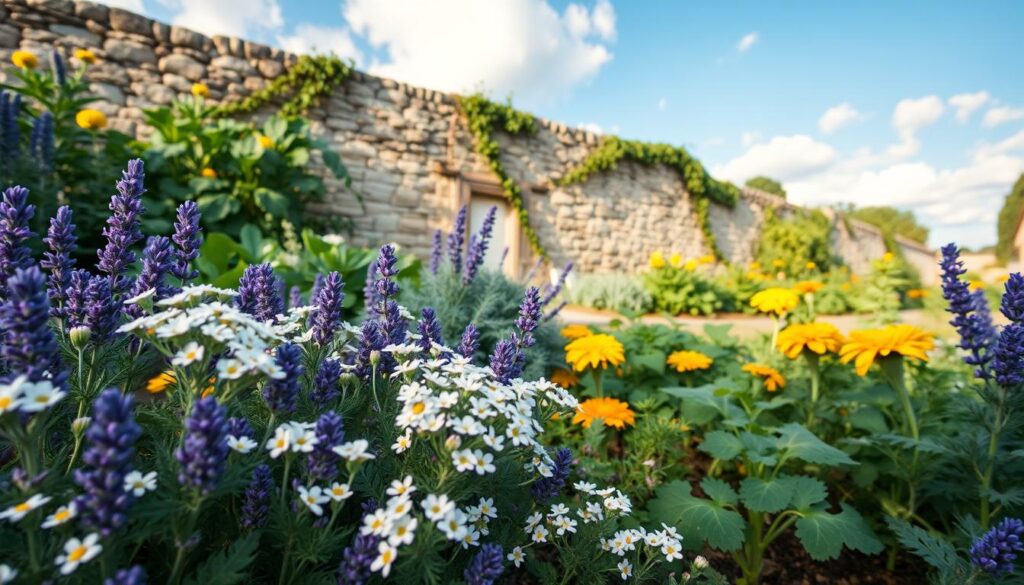
Attracting Pollinators with Alyssum
Alyssum serves as an essential element in creating thriving pollinator gardens. With its sweet scent and abundant flowers, alyssum attracts a variety of beneficial insects, including bees and butterflies. This not only enriches the biodiversity of your garden but also enhances the productivity of surrounding plants.
The Role of Alyssum in Pollinator Gardens
This flowering plant plays a vital role in supporting local ecosystems. By incorporating alyssum for pollinator gardens, you provide a reliable food source for essential insects throughout the growing season. Its low-growing habit allows it to serve as a perfect ground cover while still presenting a vibrant display that captures the attention of pollinators.
Best Pollinator-Friendly Companions
To maximize the benefits of alyssum, consider pairing it with other pollinator-friendly plants. The following companions work harmoniously alongside alyssum:
- Lavender
- Bee Balm
- Sunflower
- Echinacea
These plants not only encourage more pollinators to visit your garden but also create a stunning visual landscape. Including such a variety of pollinator-friendly plants ensures a lively and productive environment for both the insects and your plants.
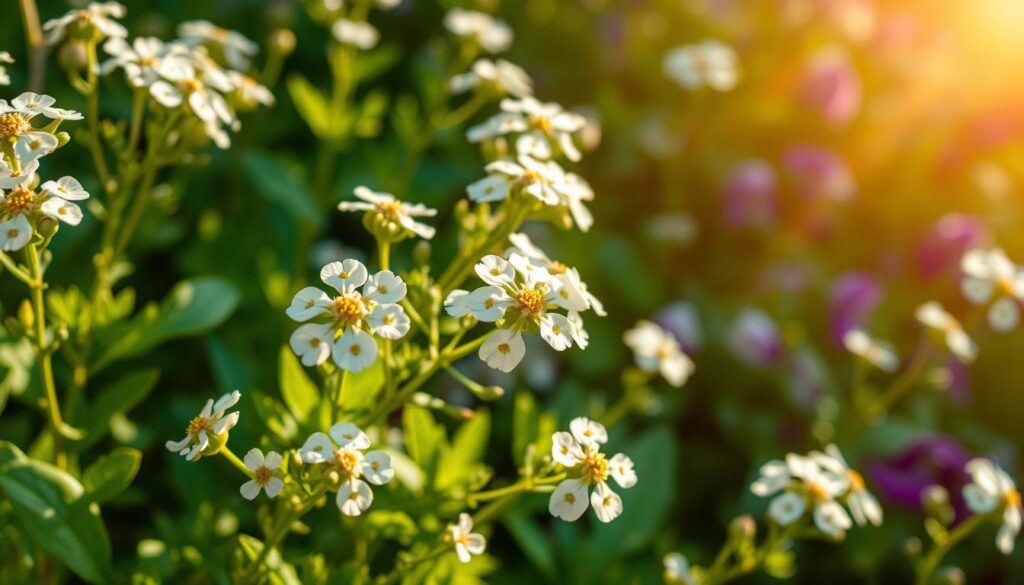
Enhancing Soil Health with Alyssum
Alyssum plays a vital role in enhancing soil health, making it a valuable addition to any garden. By incorporating this remarkable plant, you can experience various soil benefits of alyssum that positively impact the growing environment. Its adaptability and growth patterns contribute to improving garden soil health in numerous ways.
Soil Benefits of Alyssum
Alyssum serves as an organic mulch, helping to suppress weeds while retaining moisture in the soil. Its extensive root system works diligently to aerate the soil, leading to better drainage and improved soil structure. As it flourishes, alyssum encourages a rich ecosystem below ground, which is beneficial for other plants as well.
Companion Plants That Improve Soil Structure
Pairing alyssum with specific companion plants can further enhance the soil benefits of alyssum. Consider planting the following:
- Legumes, such as clover or peas, which fix nitrogen in the soil
- Comfrey, known for its ability to draw in nutrients from deep within the soil
- Radishes, which help break up compacted soil
- Mustard greens, beneficial for adding organic matter upon decomposition
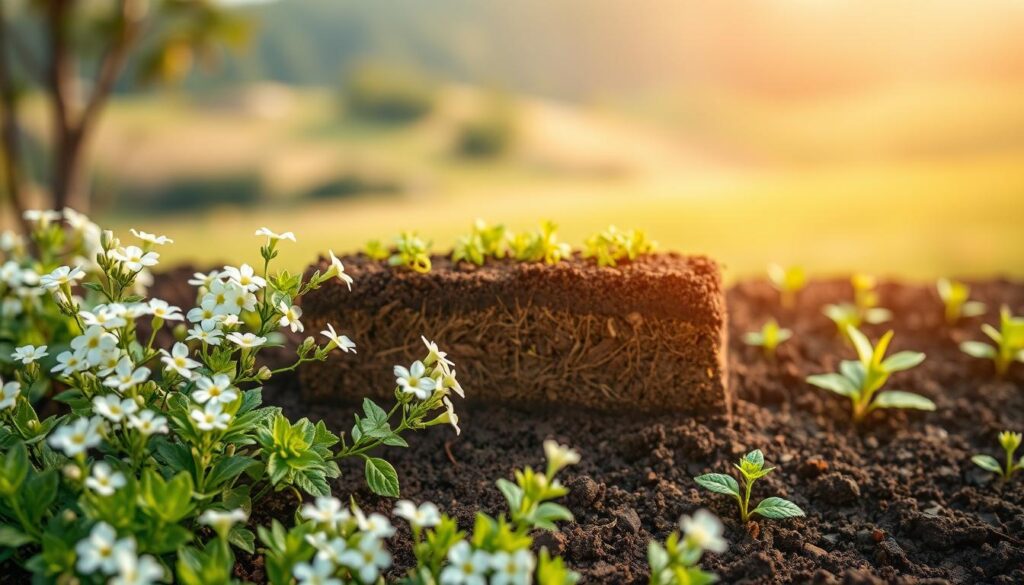
Seasonal Considerations for Alyssum Companions
Understanding the best times to plant alyssum can help you create a vibrant garden. Seasonal planting with alyssum allows you to maximize its beauty and functionality throughout the year. Each season presents unique opportunities to pair alyssum with different companions for an eye-catching display.
Spring Planting Ideas
In spring, prioritize planting alyssum alongside cool-season annuals. Combining it with pansies and violas can create a stunning visual effect as these flowers thrive in the same chilly temperatures. Consider using alyssum in borders or as ground cover, enhancing the colors and textures of taller blooms.
Summer Companion Planting
When summer arrives, focus on drought-tolerant plants such as sage and salvia. These companions work harmoniously with alyssum to create a colorful landscape that requires less water and maintenance. This pairing not only contributes to the garden’s aesthetic but also promotes sustainability by conserving water.
Fall Combinations
As fall approaches, you can integrate alyssum with ornamental grasses and late-blooming perennials. This combination extends the beauty of your garden into the autumn months and provides a lovely contrast in color and texture. Seasonal planting with alyssum guarantees a picturesque garden even as the temperatures begin to drop.
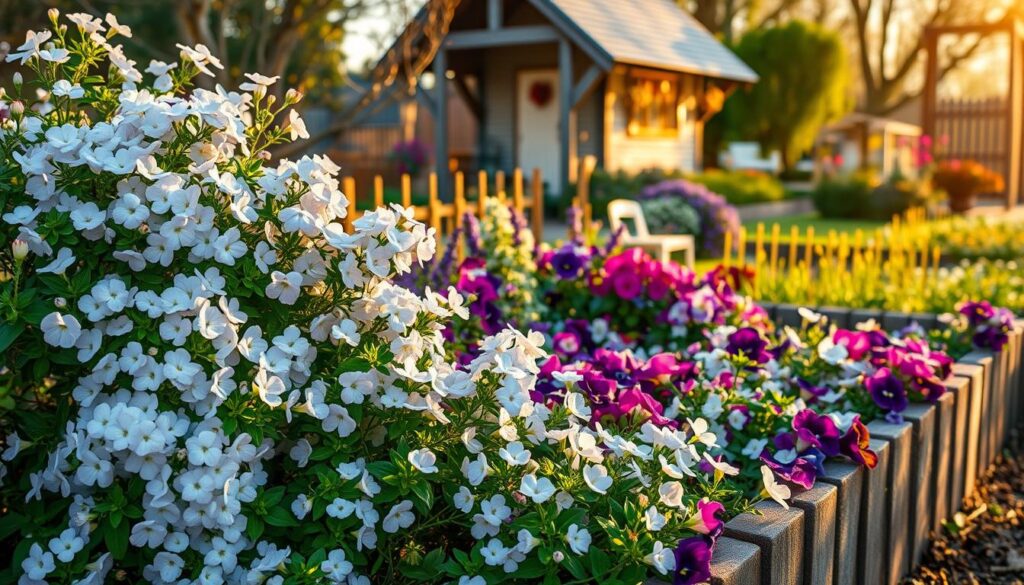
| Season | Companion Plants | Benefits |
|---|---|---|
| Spring | Pansies, Violas | Bright colors, thrive in cooler weather |
| Summer | Sage, Salvia | Drought-tolerant, low maintenance |
| Fall | Ornamental Grasses, Late-blooming Perennials | Extends garden beauty, rich textures |
Avoiding Negative Companions for Alyssum
When planning your garden, it’s essential to be aware of plants that don’t grow well with alyssum. While alyssum can thrive alongside various companions, certain plants may hinder its growth. Understanding which plants to avoid will help ensure your alyssum flourishes.
Plants to Avoid
Some plants that don’t grow well with alyssum include:
- Hostas
- Astilbe
- Ferns
- Impatiens
These plants prefer shade and moist soil, competing for essential resources like sunlight and nutrients. Avoiding these plants will help maintain the health of your alyssum.
Signs of Competing Plants
Be on the lookout for signs that indicate the presence of competing plants. Common symptoms include:
- Stunted growth of alyssum
- Yellowing leaves
- Poor flowering
If you notice these issues, evaluate your garden layout for plants that don’t grow well with alyssum. By choosing the right companions, you create a harmonious and thriving garden.
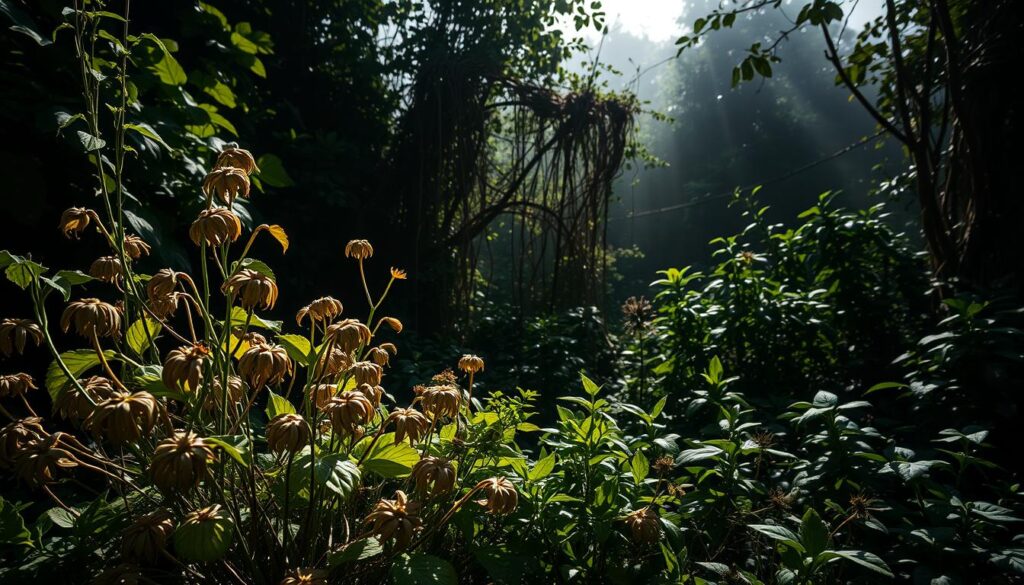
Growing Techniques for Alyssum and Its Companions
To achieve the best results in growing alyssum successfully, understanding the right conditions and care techniques is essential. By providing the ideal environment and following effective alyssum gardening techniques, you can enhance the beauty and growth of your plants.
Optimal Growing Conditions
Alyssum thrives best in full sun, requiring at least six hours of sunlight each day. Selecting well-draining soil is critical for the roots to develop properly. Consider using a mix of loamy and sandy soil to promote optimal drainage while retaining some moisture
Watering and Fertilization Tips
Consistent watering is vital, especially during hot and dry spells, as this encourages lush, soft blooms. Water the plants deeply but allow the soil to dry slightly between watering sessions to prevent over-saturation. When it comes to fertilization, use a balanced, slow-release fertilizer during the growing season, but do so sparingly. Alyssum naturally flourishes even in nutrient-poor soils, demonstrating resilience and adaptability in various gardening scenarios.
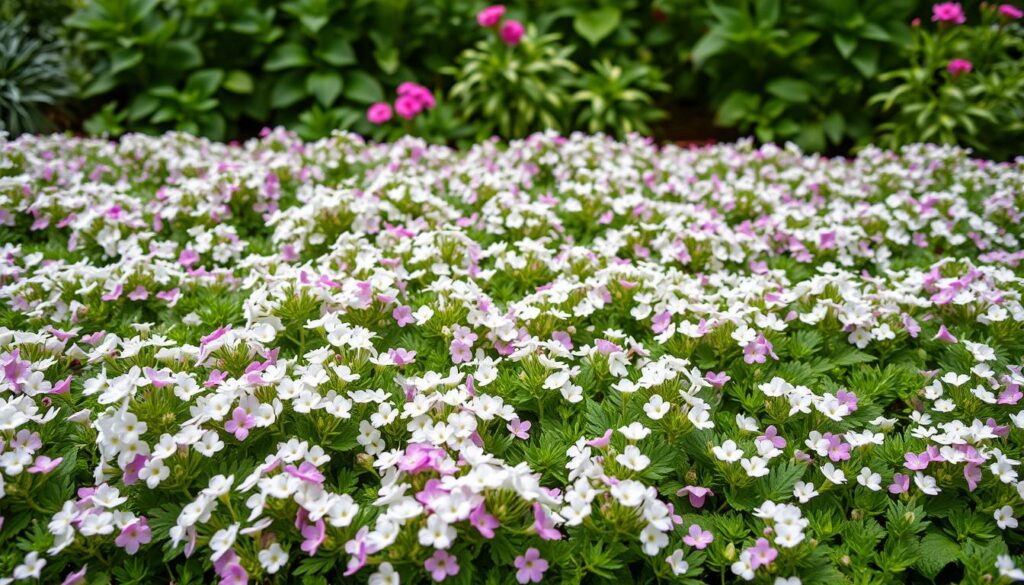
Designing Your Garden with Alyssum
Incorporating alyssum into your garden design with alyssum not only enhances the visual appeal but also allows for a variety of seasonal color schemes. These delicate flowers can brighten your landscape, creating a delightful contrast with more vibrant blooms. By thoughtfully arranging your garden, you can achieve depth and dimension while maximizing the beauty of your floral displays.
Seasonal Color Schemes
Alyssum’s adaptability allows it to fit beautifully into various seasonal color schemes for floral gardens. During springtime, pair the soft hues of alyssum with bright tulips and daffodils for a refreshing look. Summer designs may combine alyssum with bold sunflowers and zinnias, while autumn gardens can feature alyssum alongside warm-colored chrysanthemums and asters. These combinations will create stunning displays throughout the year.
Layout Ideas for Companion Plants
When planning your garden layout, position taller plants behind alyssum to create a layered effect. Using alyssum as a foreground border highlights the graceful lines of your perennial and vegetable beds. Grouping companion plants in clusters of different heights encourages a more natural appearance, fostering variety and visual interest. This thoughtful garden design with alyssum offers endless possibilities for creating an engaging and appealing outdoor space.
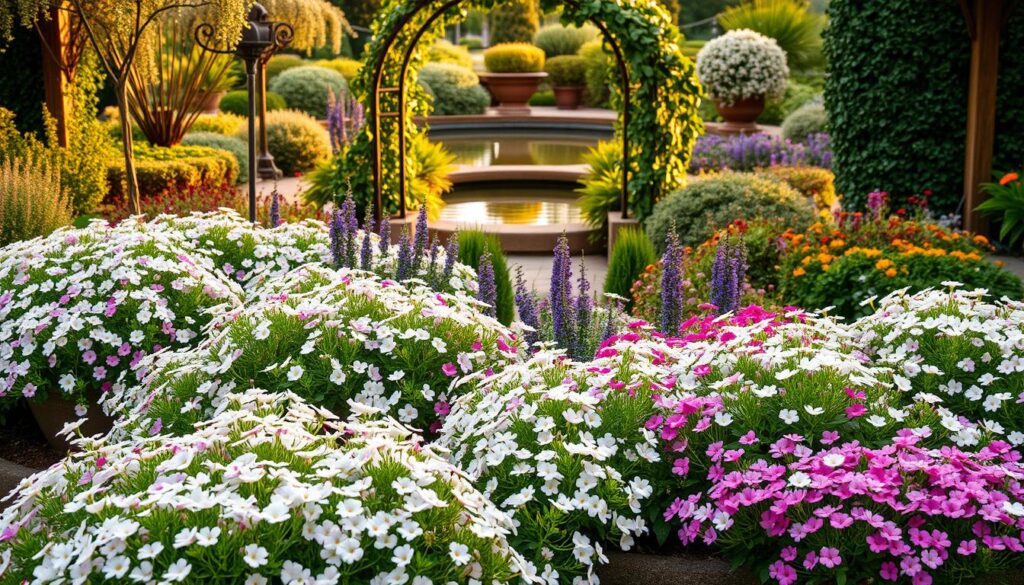
| Season | Color Combinations | Suggested Companion Plants |
|---|---|---|
| Spring | Soft Pastels | Daffodils, Tulips |
| Summer | Bright and Bold | Zinnias, Sunflowers |
| Autumn | Warm Tones | Chrysanthemums, Asters |
Dealing with Pests and Diseases
Alyssum is a beautiful addition to your garden, known for its sweet fragrance and delicate blooms. Despite its resilience, pests affecting alyssum can pose challenges, with aphids and whiteflies being the most common culprits. Effective strategies for managing garden pests organically can help maintain the health of your alyssum and its companions.
Common Issues with Alyssum
Alyssum can attract various pests, particularly in warm weather. Aphids tend to cluster on tender new growth, sucking sap and potentially causing damage. Whiteflies hide on the undersides of leaves, leading to yellowing and weakening of plants. Recognizing these pests early is crucial for effective management.
Companion Strategies for Pest Management
Incorporating pest-repelling herbs and flowers into your garden can greatly assist in handling pests affecting alyssum. Consider planting:
- Basil – This herb not only enhances culinary dishes but also helps deter multiple garden pests.
- Marigolds – Known for their vibrant colors, marigolds emit a scent that confuses common pests.
- Insectary plants – Such as dill and fennel, which attract beneficial insects that prey on harmful pests.
Regular inspections of your alyssum and companion plants contribute to identifying pest issues before they escalate. Introducing beneficial insects, such as ladybugs or lacewings, can also provide natural control, ensuring a healthier garden environment.
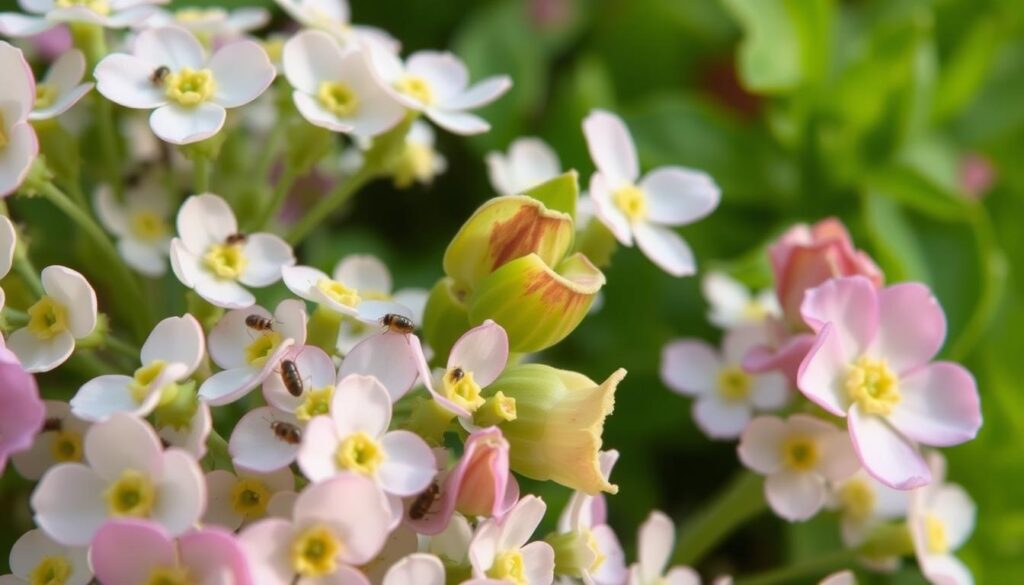
| Pest | Effects on Alyssum | Control Method |
|---|---|---|
| Aphids | Sap-sucking, leads to stunted growth | Introduce ladybugs, use insecticidal soap |
| Whiteflies | Leaf yellowing, overall plant weakness | Encourage natural predators, use sticky traps |
By utilizing organic methods for managing garden pests, you create a thriving ecosystem in your garden that benefits all plants. Keeping a diverse range of plants, regular monitoring, and embracing nature’s helpers can lead to a flourishing alyssum display.
Propagation and Maintenance of Alyssum
Propagating alyssum is quite straightforward, making it a favorite among gardeners. This delightful plant can easily be grown from seeds, which can be sown directly into the garden during spring or started indoors for an earlier bloom. Understanding the methods for propagating alyssum is essential for successful growth. With its low maintenance needs, you can enjoy vibrant blooms with minimal effort.
Methods for Propagating Alyssum
When it comes to propagating alyssum, these methods are particularly effective:
- Direct Sowing: Sow seeds directly into prepared garden beds once the soil has warmed.
- Indoor Seed Starting: Start seeds indoors about 6-8 weeks before the last frost date to get a head start.
- Division: For established plants, you can divide clumps in early spring or fall to encourage new growth.
Ongoing Care for Healthy Growth
Maintaining alyssum plants involves simple strategies for optimal health:
- Watering: Regularly water your plants, particularly during dry spells to encourage robust growth.
- Deadheading: Remove spent flowers to encourage a longer blooming period and promote healthy growth.
- Pest Monitoring: Keep an eye out for pests and diseases; a quick intervention can save your plants.
- Light Trimming: Occasional light trimming maintains a bushy appearance and fosters new growth.
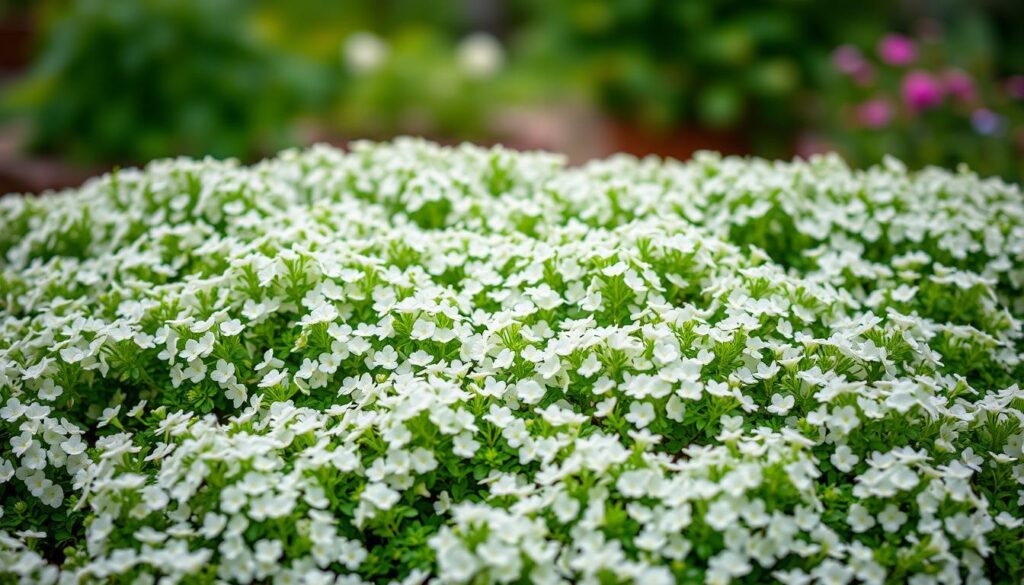
By mastering the techniques for propagating alyssum and adequately maintaining alyssum plants, you will enjoy a flourishing garden filled with these charming flowers. Taking the time to ensure proper care will yield a vibrant display that enhances your outdoor space significantly.
The Aesthetic Appeal of Alyssum and Its Companions
The aesthetic garden design with alyssum greatly enhances any outdoor space, drawing the eye with its delicate blooms and charming scents. Combining alyssum with a variety of companion plants creates a visual feast that captivates the senses. Striking color combinations and varied textures not only improve the garden’s overall look but also foster a harmonious environment.
Color Combinations
Alyssum features soft white, pink, and lavender hues that harmonize beautifully with bolder flowers. Pairing them with vibrant marigolds or striking salvias adds a pop of color that enlivens the landscape. This blend not only looks appealing but also supports various wildlife, enhancing the ecosystem’s diversity.
Height and Texture Variations
Incorporating alyssum as a ground cover under taller plants takes the aesthetic garden design with alyssum to the next level. This layering adds depth and dimension, creating a more inviting atmosphere. Diverse textures, such as the delicate leaves of alyssum contrasted with the robust foliage of taller companions, contribute to an engaging visual experience that keeps your garden dynamic throughout the seasons.
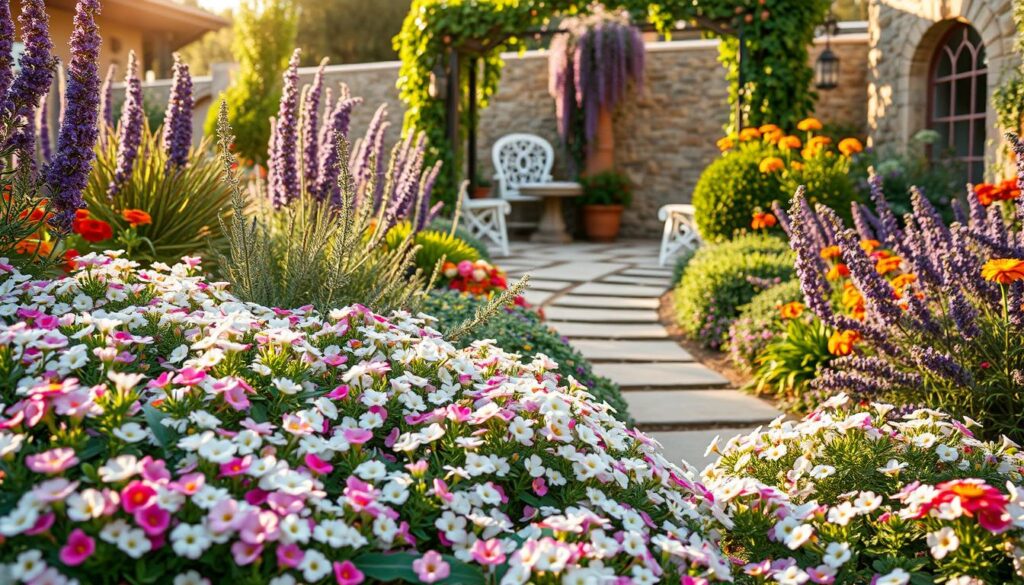
Success Stories from Gardeners
Many gardeners have embraced alyssum as a fundamental element of their gardening experience. Through a variety of gardener testimonials on alyssum, you’ll discover how this adaptable plant not only enhances the overall beauty of gardens but also works effectively alongside other plants to create a thriving ecosystem. Pairing alyssum has proven to deter pests, allowing for healthier plants and fruitful harvests.
Inspiring Testimonials
Gardeners appreciate the vibrant colors and delicate fragrance of alyssum. Numerous testimonials reveal that gardens flourishing with alyssum attract beneficial insects. These insects play a crucial role in maintaining garden health. Testimonials highlight stories from those who have seen reduced pest issues thanks to alyssum’s companion planting abilities.
Tips from Experienced Gardeners
Seasoned gardeners offer successful alyssum gardening tips. They suggest consistent maintenance, such as regular watering and trimming, to keep alyssum healthy and blooming. Experimenting with various companion plants is encouraged to find the right mix for your unique garden. Sharing experiences can lead to a more fruitful garden and a community of satisfied gardeners.
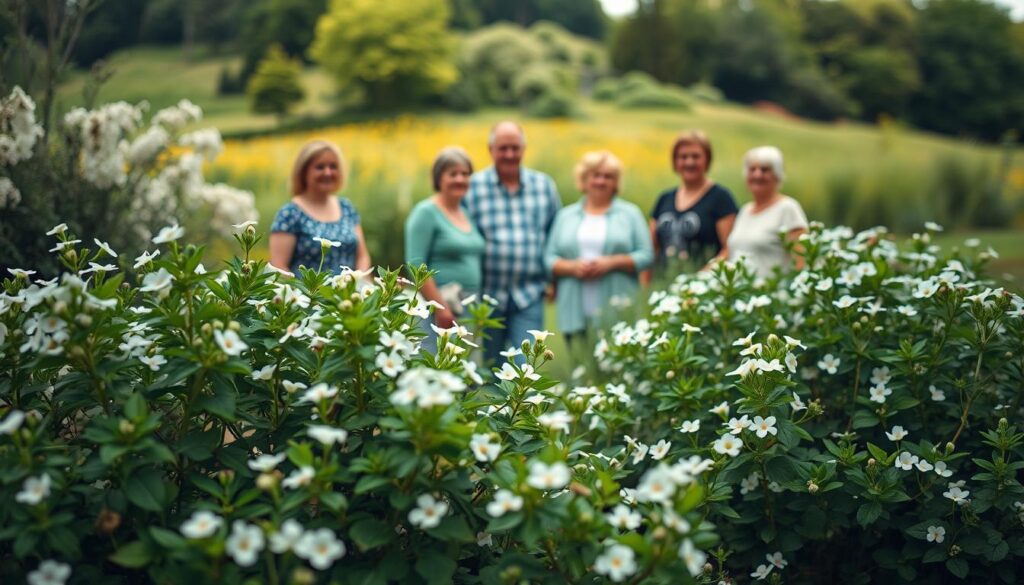
Conclusion: Maximizing Your Alyssum Garden
As you wrap up your exploration of companion planting, it’s clear that alyssum plays a vital role in creating a vibrant and healthy garden. Understanding which plants complement alyssum can significantly enhance both the visual aesthetics and the overall resilience of your garden. The strategic pairing of alyssum with flowers, vegetables, and herbs not only promotes biodiversity but also paves the way for a richer gardening experience.
To maximize your alyssum garden, consider the key points discussed throughout this article. From choosing suitable companion plants to understanding the importance of attracting pollinators, each aspect contributes to the thriving ecosystem in your garden. Take some time to reflect on your existing plant pairings and explore new combinations that could elevate your gardening efforts. There are endless opportunities to experiment as you take the next steps for companion planting.
Embracing companion planting will allow you to unlock the full potential of your alyssum garden. Try integrating different techniques, observe the interactions among your plants, and experience the rewarding results. Your journey in maximizing your alyssum garden has just begun, and it’s filled with possibilities waiting to be discovered.
